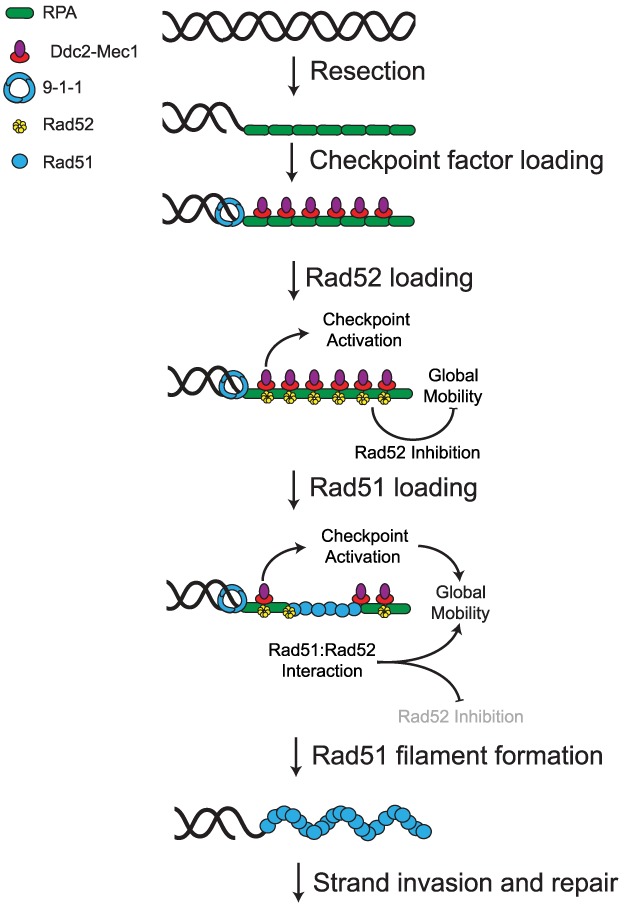Figure 6.

A model for the role of the recombination machinery in regulating global mobility. After DSB formation, end resection yields RPA-bound 3′ ssDNA tracts that serve as platforms for both checkpoint signaling and repair factor loading. At this time, the DNA damage checkpoint becomes active, but the recruitment of Rad52 to the ssDNA inhibits the initiation of global mobility until Rad51 is sufficiently recruited. The interaction of Rad51 with Rad52 alleviates this inhibition (shown by grayed-out Rad52 inhibition), allowing the checkpoint to promote global mobility. Thus, proper assembly of the recombination machinery to sites of damage offers an additional layer of regulatory input to the checkpoint apparatus that restricts the activation of mobility to cells that are committed to homologous recombination.
